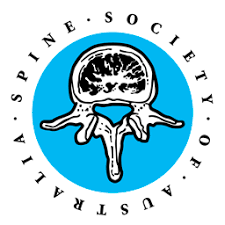Products & Tech
-
Keyhole Surgery
Traditional open spine surgery requires a large muscle-tearing incision and a long recovery.
Due to advances in technology, such as indirect viewing and surgical micro tools, a more minimally invasive approach to spine surgery has become possible. Also, video magnification allows more accurate diagnosis and precise surgery of tissues and detection and control of small bleeding vessels, minimising the risk of haemorrhage during or after spine surgery.
Undergoing spine surgery is a big decision and should be made on a well-informed basis. In your pre-operative consultation with Mr. Malham, please ask questions and thoroughly read the information sheets that may be provided. You can also reference our website section, ‘Making an Informed Decision’, which may assist you in making the right decision about your spine surgery needs.
More Artificial Disc Replacement information – coming soon!
-
Robotics
Robotic spinal surgery is one of the greatest neurosurgery and spinal surgery advances.
Robotic spinal surgery was developed to introduce more accuracy to spine surgery. In short, a surgical guidance system assists your surgeon in performing ‘Minimally Invasive Spine Surgery’. Using a robot, surgeons have better accuracy, as the robot provides a guidance system based on a computerised pre-operative plan. Each patient has a unique anatomy, so before performing the surgery and during pre-operative planning, multiple CT scans are taken to prepare a 3D surgical plan specifically for your spine anatomy.
Robotic guidance systems allow surgeons to perform many types of spine surgery, from the simplest to the most complex, in a more efficient, accurate way, giving greater precision during surgery, resulting in an accuracy of 1mm. It also reduces radiation exposure, lessens damage to surrounding tissue, potentially lowers complication rates, reduces postoperative pain, lowers incidence of risk and complications and shortens recovery time.
For more information on Robotics, visit Robotic Surgery - 404 Error
More information on Prof. Malham’s website is coming soon!
-
Artificial Disc Replacement
Total or Artificial Disc Replacement is a surgical procedure in which a diseased or damaged intervertebral disc of the spinal column is replaced with an artificial, man-made or “artificial” disc device. Artificial Disc Replacement can be performed on the lower back (lumbar spine) or the neck (cervical spine). This spine surgery technique aims to relieve back pain and maintain intervertebral disc height while restoring the physiologic motion of a person with a healthy disc.
The first lumbar total disc replacement, or LTDR, which had the form of a steel ball, was implanted by Swedish Ulf Fernstöm, using an anterior approach, in the 1960s. Initial results seemed encouraging but proved disappointing long-term, as the ball subsided into the subchondral bone, or the layer of bone just below the cartilage in a joint. It is the ‘shock absorber’ in weight-bearing joints.
In the early 1980s, Schellnack and Buttner implanted the SB Charité® prosthesis comprising two chromium-cobalt plates and a mobile polyethylene core. Then in 1989, Marnay used the ProDisc-L®, which has plates with a central titanium stem. Since then, many different LTDR designs have come onto the market.
There are a number of different disc designs. Each is unique in its own way, but all maintain a similar goal: to reproduce the size and function of a normal intervertebral disc. Some artificial discs are made of metal, while others are a combination of metal and plastic, similar to joint replacements in the knee and hip. Materials used include medical-grade plastic (polyethylene) and medical-grade cobalt chromium or titanium alloy. These materials have been used in the body for many years.
The most commonly used Total Disc Replacement designs have two plates. One attaches to the vertebrae above the disc being replaced, and the other to the vertebrae below. Some devices have a soft, compressible plastic-like piece between these plates. The devices allow motion by smooth, usually curved, surfaces sliding across each other.
The future of artificial disc replacement technology will likely include advancements in the design of implants and tools for diagnosing the source of pain, as well as the development of ways to return the disc to normal function without the insertion of any biomechanical device.
In general, a good candidate for disc replacement is someone who has the following characteristics:
- Back pain caused by problematic intervertebral discs in the lumbar or cervical spine regions
- No significant facet joint disease or bony compression on spinal nerves
- Body size that is not excessively overweight
- No prior major surgery on the lumbar spine
- No deformity of the spine (scoliosis)
- For patients who have suffered from back pain for at least six months after nonsurgical treatment, especially if the pain and other symptoms are making it difficult to complete everyday activities, then spine surgery may be an option to provide pain relief and restore one’s ability to function. Evaluation with MRI and X-rays may be enough for the surgeon to render an opinion, but other tests, including CT scan and provocative discography, may be needed to determine if surgery is required and if an Artificial Disc Replacement is an option.
Most Artificial Disc Replacement surgery will take from 2 to 3 hours. Your surgeon will approach your lower back from the anterior (front). With this approach, the organs and blood vessels must be moved to the side. This allows your surgeon to access your spine without moving the nerves. Usually, a Vascular Surgeon assists the Orthopaedic Surgeon with opening and exposing the disc space. During the procedure, your surgeon will remove your problematic disc and then insert an Artificial Disc Replacement into the disc space.
In your pre-operative consultation with Prof. Malham, please ask questions and thoroughly read the information sheets that may be provided. You can also reference our website section, ‘Making an Informed Decision’, which may assist you in making the right decision for your spine surgery.
More Artificial Disc Replacement information – coming soon!
-
Bone Morpho Protein / INFUSE (TM)
Bone Morphogenetic Proteins (BMP) – InFuse R
How Bone Morphogenetic Proteins, or BMP, work is that it stimulate bone growth naturally in the human body. These proteins already exist in the body and can be produced, concentrated and placed in the area of the spine during spinal fusion. More importantly, they can create a fusion without the need for any use of the patient’s own bone, and this is beneficial to the patient in terms of avoiding the potential side effects and complications that can occur during bone harvesting procedures.
The discovery of BMP growth proteins is accredited to Marshall Urist, MD, an Orthopaedic Surgeon who worked at the time at UCLA Department of Orthopaedic Surgery in Los Angeles, California, USA.
Benefits
The primary goals and benefits of using BMP in spinal fusions are:
- To create a spinal fusion that is as good or better than using the patient's own bone, and
- To eliminate the need for harvesting the patient’s bone (from their hip), that avoids the potential side effects and complications of the bone harvesting procedure.
More information on Bone Morphogenetic Proteins (BMP) (INFUSE R), coming soon!
Contact Us
Hours
Monday to Friday
9.00am – 5.00pm
*This may vary on occasions or the rooms may be briefly unattended.
All Rights Reserved | Greg Malham, Neurosurgeon, BSc MBChB DMed FRACS



